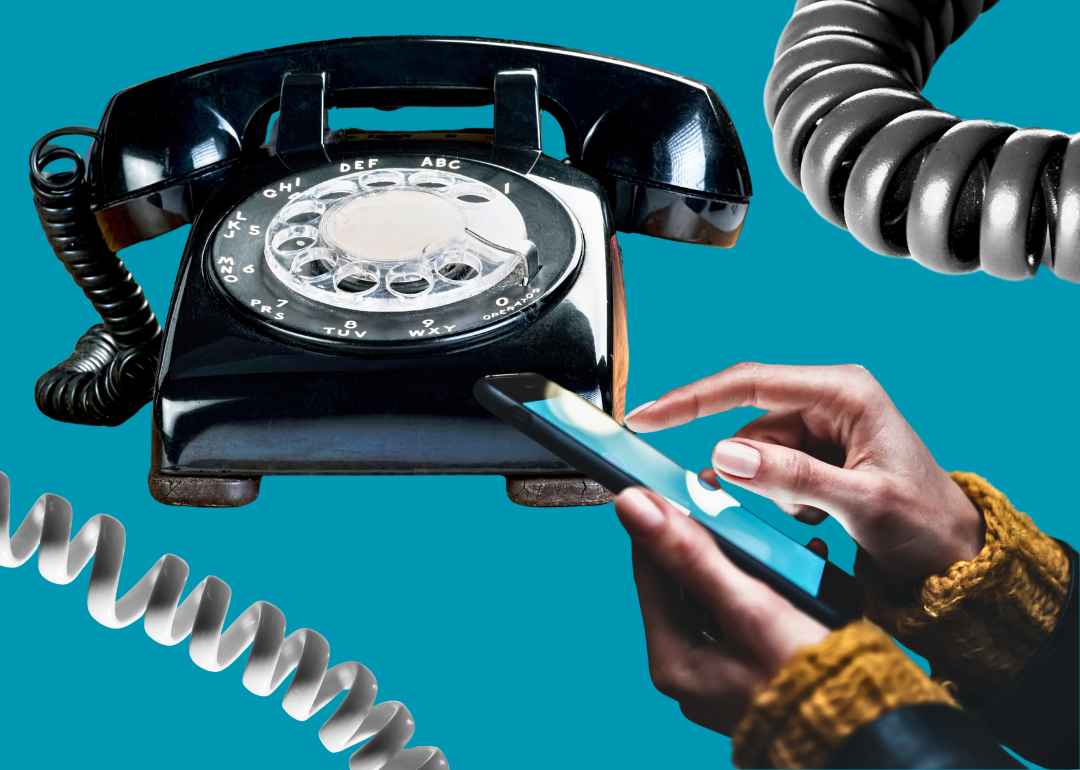
4 charts that show how much the role of phones has changed in the last 60 years
This story originally appeared on Visible and was produced and distributed in partnership with Stacker Studio.
4 charts that show how much the role of phones has changed in the last 60 years
Phones have revolutionized how people communicate, giving people the ability to instantly interact with the world since Alexander Graham Bell received the U.S. patent for the telephone in 1876.
At first, telephones were more of a novelty than a practical tool, but by the early 1900s, general telephone use had become more commonplace. By 1920, an estimated 35% of American households had a telephone. The unveiling of the first transcontinental telephone line in 1915 meant Americans could finally speak with friends, family, and business partners on either side of the country. Early telephones also played an important role in military communication during wartime, particularly WWI, when radios were still extremely heavy, large, and had very poor range.
While the telephone has undergone major transformations over time, the speed and game-changing technology of the last 60 years have completely transformed how we use it in our daily lives (not to mention how it looks and operates). Untethered from cords and wires, telephones can now be carried wherever we go. Most people can call people from other cities, or states, or even countries. A vast majority of people can also use their devices to surf the web or check social media.
However, phones haven't come without drawbacks, like security and privacy concerns. Visible partnered with Stacker to explore how the role of phones has evolved over the last six decades using data from the World Bank, the Centers for Disease Control and Prevention, the Pew Research Center, and Gallup.
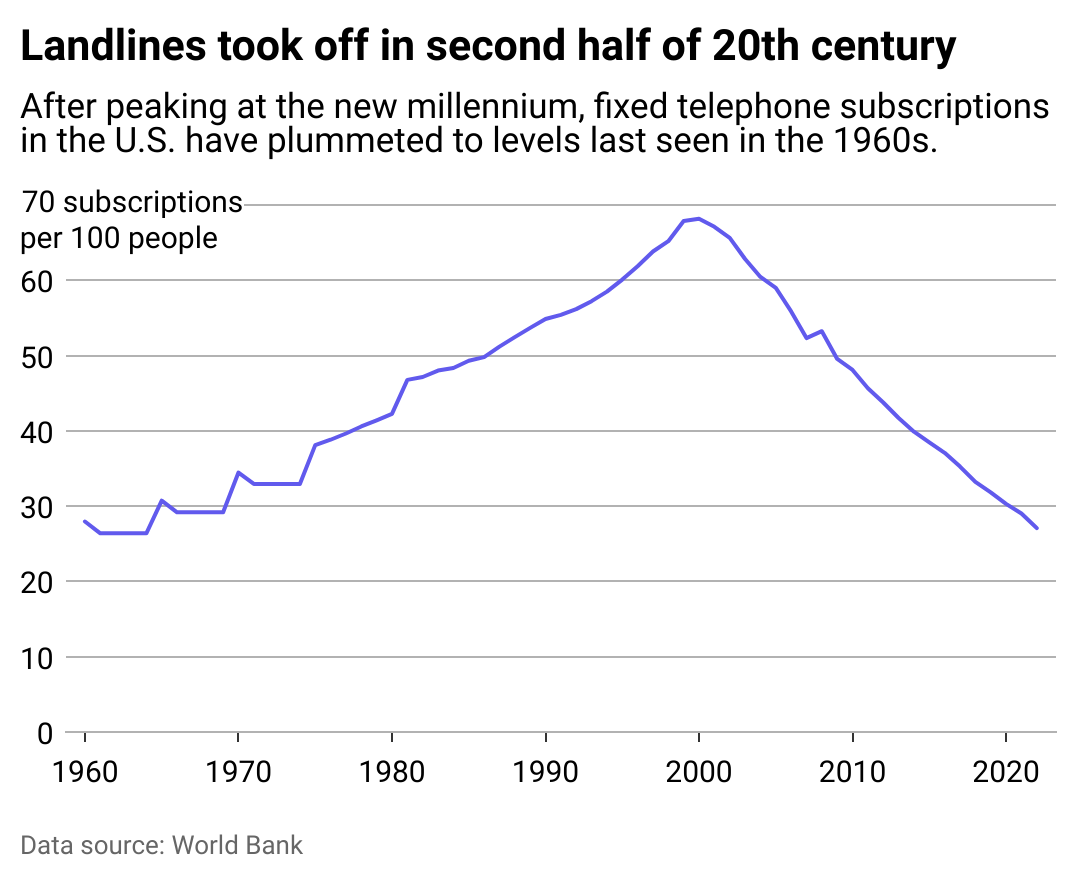
Landline use soars from the mid-1900s until 2000
In the 1960s, owning a home phone was still a pricey affair. In 1968, a 3-minute cross-country call would cost around $18 in today's dollars. Americans would rent phones from AT&T, which owned about 80% of the market at the time, on a monthly basis.
When the government broke up AT&T's monopoly in 1983, phone-associated costs decreased. People could also finally purchase their own phones, often at a price point similar to that of renting one for less than a year.
By the dawn of the new millennium, as cellphones and calls over the internet using services like Skype became increasingly popular, landline usage rates began to plummet. By 2020, the number of U.S. households with a landline had sunken to levels last seen in the 1960s.
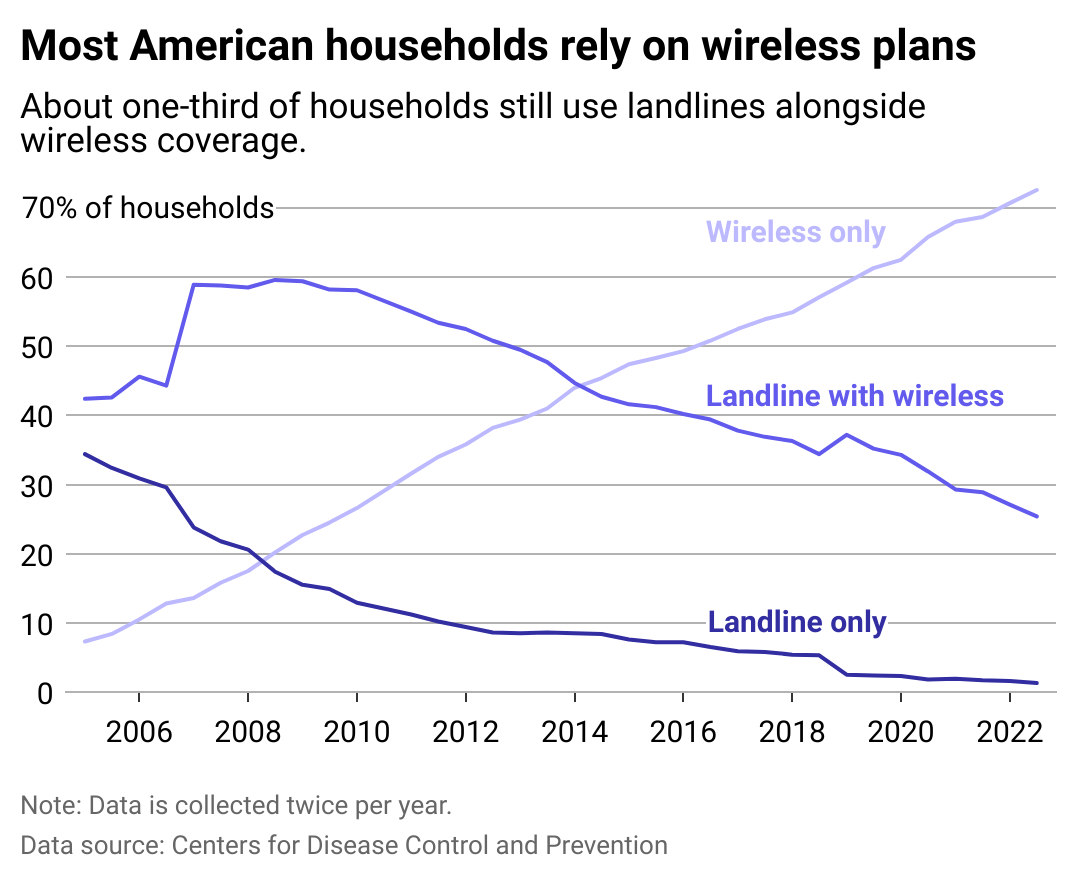
Cellphones take over in the 2010s
In the first half of 2004, the CDC estimated that only 4.4% of adults relied solely on cellphones and lived in a home without landlines. By the second half of 2022, however, that number increased dramatically to 72.5% of adults.
Landlines are still regarded as the most reliable form of communication, especially in emergencies, since cellphone towers can be knocked out and high-speed internet connections rely on a working electrical grid. Currently, less than 30% of adults maintain a landline alongside their wireless, and just 1.3% of adults only keep a landline.
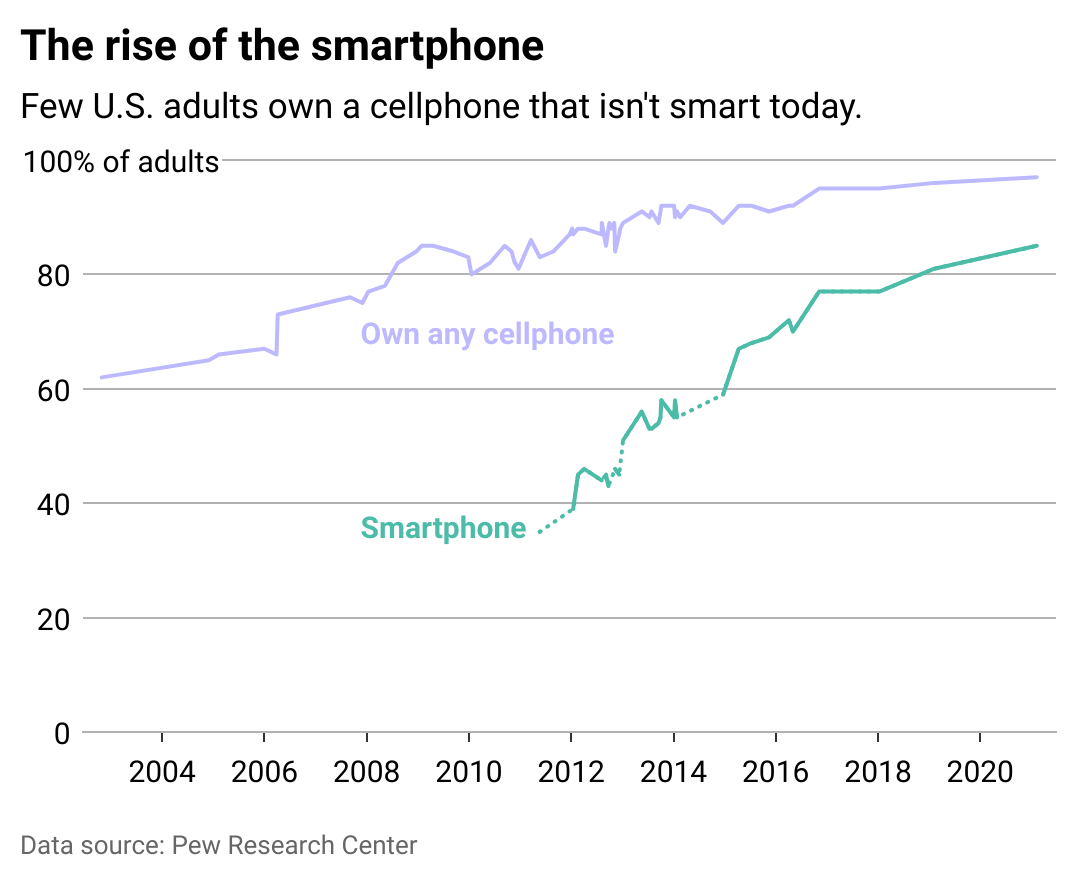
The smartphone boom erupts in 2015
While a cellphone is simply any phone that doesn't require the use of a landline, a smartphone is a cellphone with features like apps, video cameras, and internet browsers. The first smartphone hit the market in 1994.
But it wasn't until the first few Blackberry models were released in the early to mid-2000s that a notable number of Americans started purchasing smartphones. The release of the first iPhone in 2007 further fueled the smartphone market, and since then, smartphone ownership rates have been on a steady, steep incline.
Smartphones are the most popular with younger generations between 18 to 50 years old, at least 95% of whom own one. More than 9 in 10 college graduates are more likely to own smartphones, according to Pew.
As cheaper models hit the market and used smartphones became more plentiful, it's not surprising that by 2020, most people who owned a cellphone owned some type of smartphone. With the additional features like AI integration and even longer distance cameras that smartphone developers continue to create, it's likely these devices will only continue to get smarter and more popular.
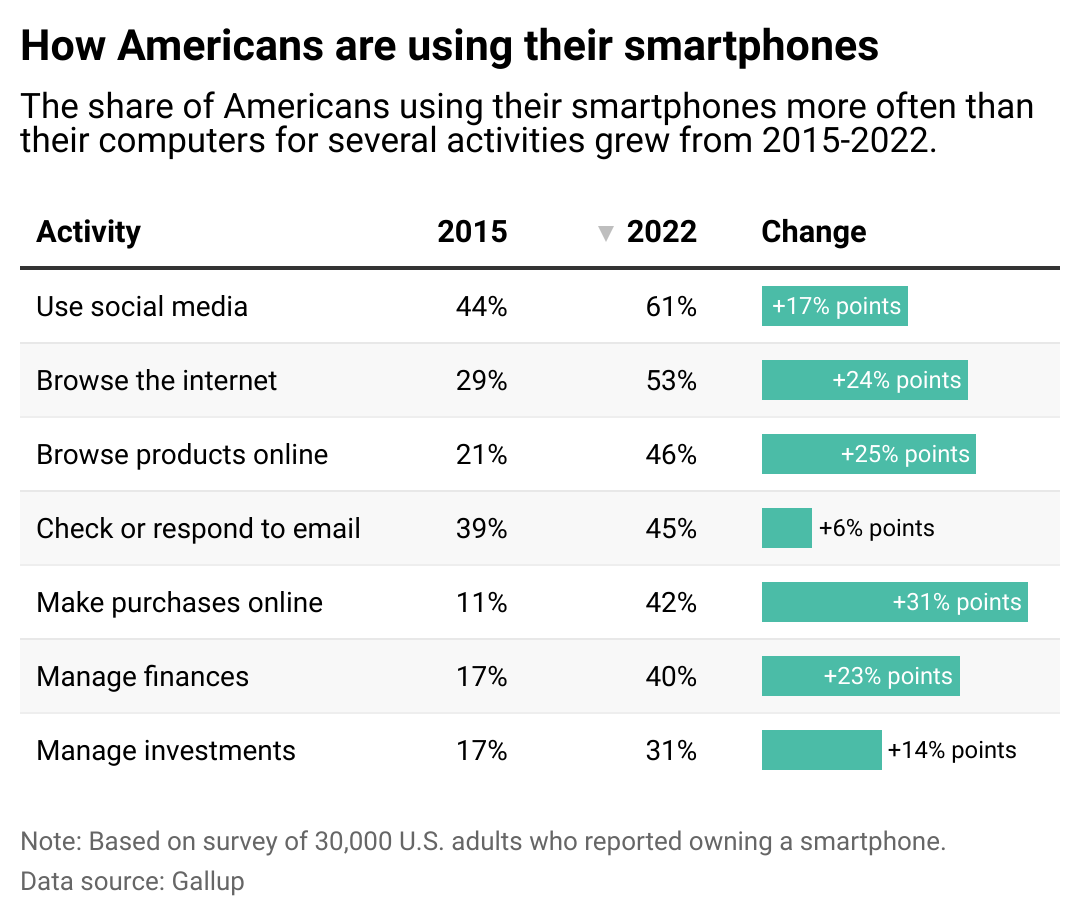
Today, smartphones are being used as mini computers
As the capabilities of smartphones have increased, so too has the number of hours Americans spend on them. Between 2015 and 2022, the number of people using their smartphones for several common tasks increased drastically.
The biggest shift has been in people using their smartphones for shopping. In 2015, just 11% used their phones for purchasing, but seven years later, that figure increased to 42%, according to Gallup. Americans' reliance on their phones has grown so much that nearly 3 in 5 Americans say they use their devices "too much."
In every age group, most people kept their phones close to them during waking hours and even kept them nearby while sleeping, according to the same poll. The younger a user is, however, the more likely they are to do both. People ages 18 to 29 keep their smartphones close by more than 90% of every day (and night).
The pandemic has likely played a large role in the massive increase in people using their smartphones for activities like browsing and purchasing products online and managing their finances. Now that people have grown more accustomed to doing these activities online, these rates will probably continue to rise.
Story editing by Carren Jao. Copy editing by Kristen Wegrzyn.



